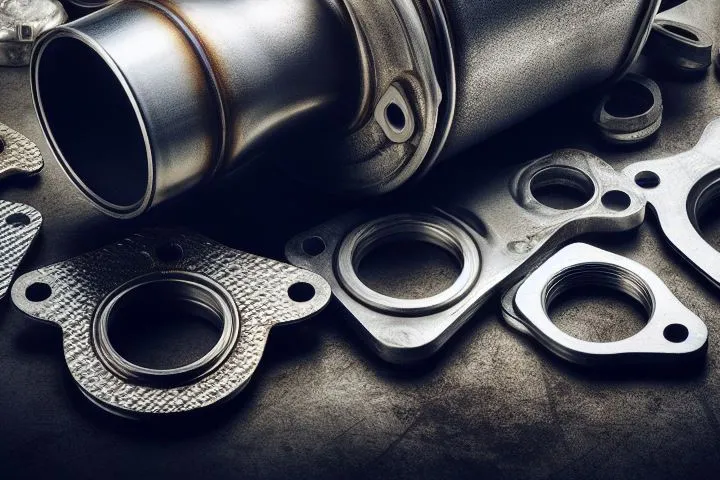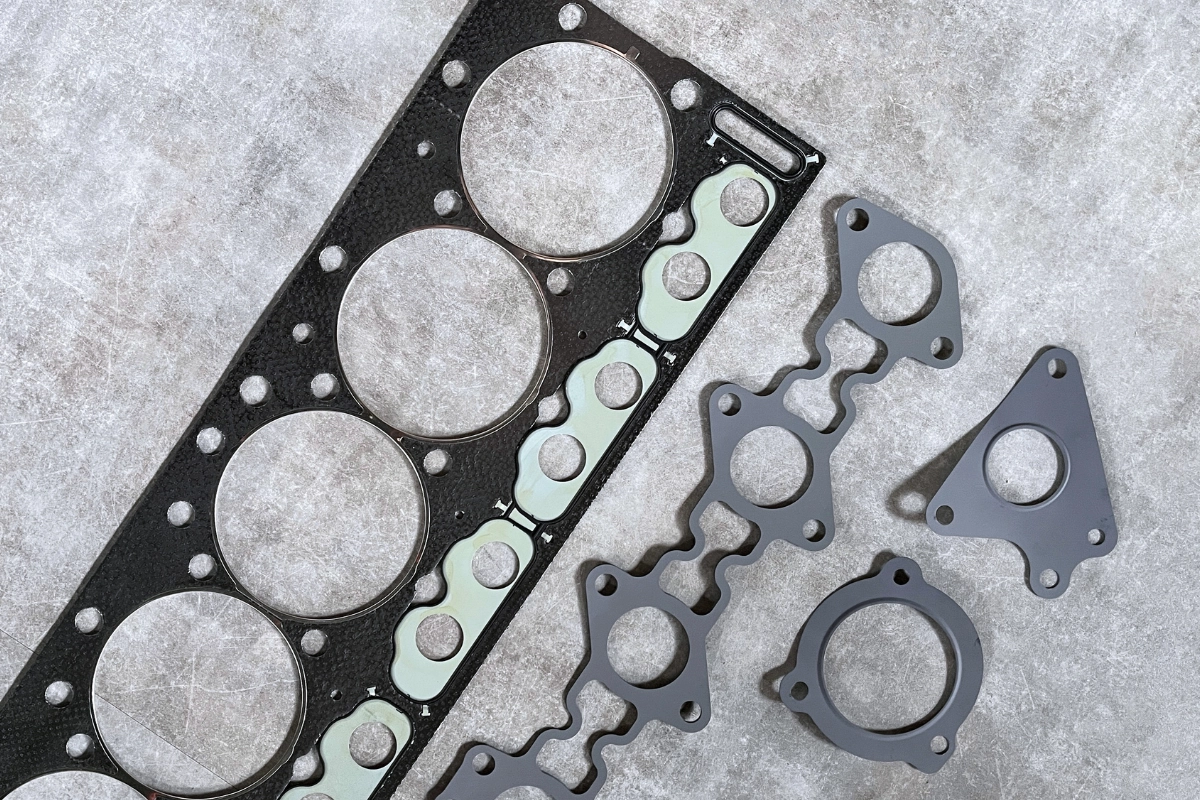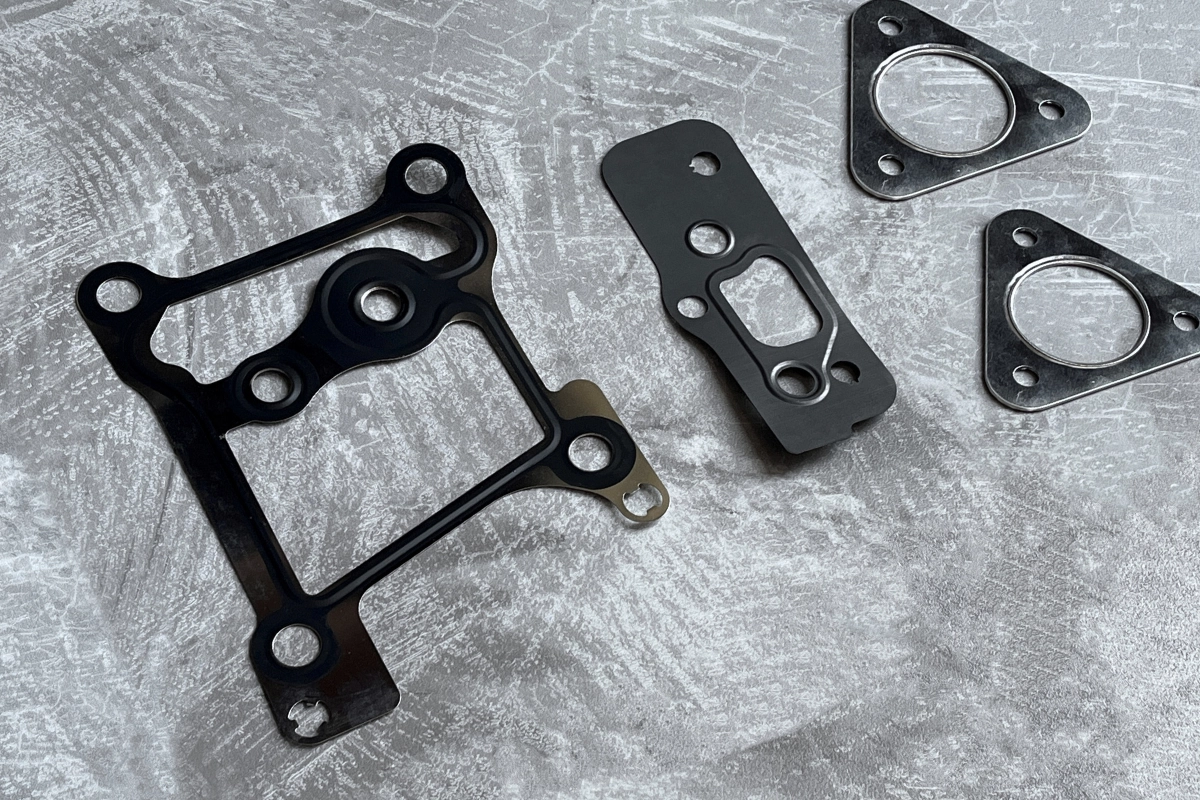
The exhaust pipe gasket is a gasket set between the exhaust pipe and the exhaust manifold, whose main function is to prevent leakage between the two. This can enhance the power and fuel efficiency of the vehicle, reduce noise, and reduce exhaust pollution. The operating mechanism of the exhaust pipe gasket is to use the elasticity and sealing of the metal sheet to fill the gap between the exhaust pipe and the exhaust manifold, thereby forming a sealed exhaust system.
When the vehicle engine is running, the high-temperature and high-pressure exhaust gas generated by combustion will pass through the exhaust manifold into the exhaust pipe, and then through components such as the three-way catalytic converter and muffler, and finally discharged outside the vehicle. If there is no gasket installed between the exhaust pipe and the exhaust manifold, or if the gasket is aged, damaged, or loose for reasons causing leakage, then the exhaust gas will lose some pressure and temperature here, affecting the power and fuel efficiency of the vehicle.
At the same time, leaks will also produce hissing or popping noises, interfering with the comfort of the driver and passengers. What’s more serious is that the leak will also let unconverted exhaust directly enter inside or outside the vehicle, endangering human health and environmental quality.
Table of Contents
Where are the exhaust gasket and exhaust pipe gasket installed respectively?
The exhaust manifold gasket, commonly seen in diesel engines, primarily functions to seal the exhaust manifold and cylinder head together. The exhaust manifold is a pipe made of metal, connecting the exhaust ports of each cylinder to form a unified outlet. The exhaust manifold gasket is made from flexible material (such as rubber or metal) that can withstand high temperatures and pressures. If the exhaust manifold gasket is damaged or aged, it may cause air leakage between the exhaust manifold and the cylinder head, thereby affecting the performance of the engine.
The exhaust pipe gasket is primarily used to seal the exhaust pipe and other exhaust components (such as catalytic converters, mufflers, etc.). The exhaust pipe is a long and curved metal pipe, connecting the outlet of the exhaust manifold to the rear of the vehicle. Exhaust pipe gaskets are usually made of materials such as graphite or stainless steel, with the ability to resist high temperatures and corrosion. If the exhaust pipe gasket is damaged or aged, it may cause leaks between the exhaust pipe and other components, thereby affecting emissions and noise.
Learn more: 5 Types of Materials for Exhaust Gaskets
Exhaust Pipe Gasket
The following are also related products provided by MJ Gasket
Application
MJ Gasket’s exhaust gasket list Exhaust Manifold Gasket – Aftermarket Engine Parts
-
- Caterpillar – C7/C9/C10/C12/C13/C15/C27/C32/G3500
- Cummins – QSK60/ISX/ISB/K38/ISX12/QSB3.3
- Detroit Diesel – S50/60/4000, DD15
- MTU – Series 4000/Series 396/Series 2000
- Navistar – MaxxForce 7, DT466
- Paccar – MX-13
- Mack – E7
- Volvo – D12
About MJ Gasket
MJ Gasket started in the early 1980s and always focuses on high-quality engine gasket solutions in Taiwan.
Our dedication to excellence has earned us the prestigious ISO 9001:2015 certification for five consecutive years and made us a certified gasket manufacturer recognized by GFA. We have already served hundreds of customers worldwide, you can trust MJ Gasket for all your gasket needs.
If you have any concerns or questions regarding making an international purchase, please visit our FAQ page for more details. Alternatively, you can contact the MJ sales team for assistance.
|
Why can't I see product images? Product images, material details, and BOM are only available to MJ Members. To unlock this information, simply register here. |

